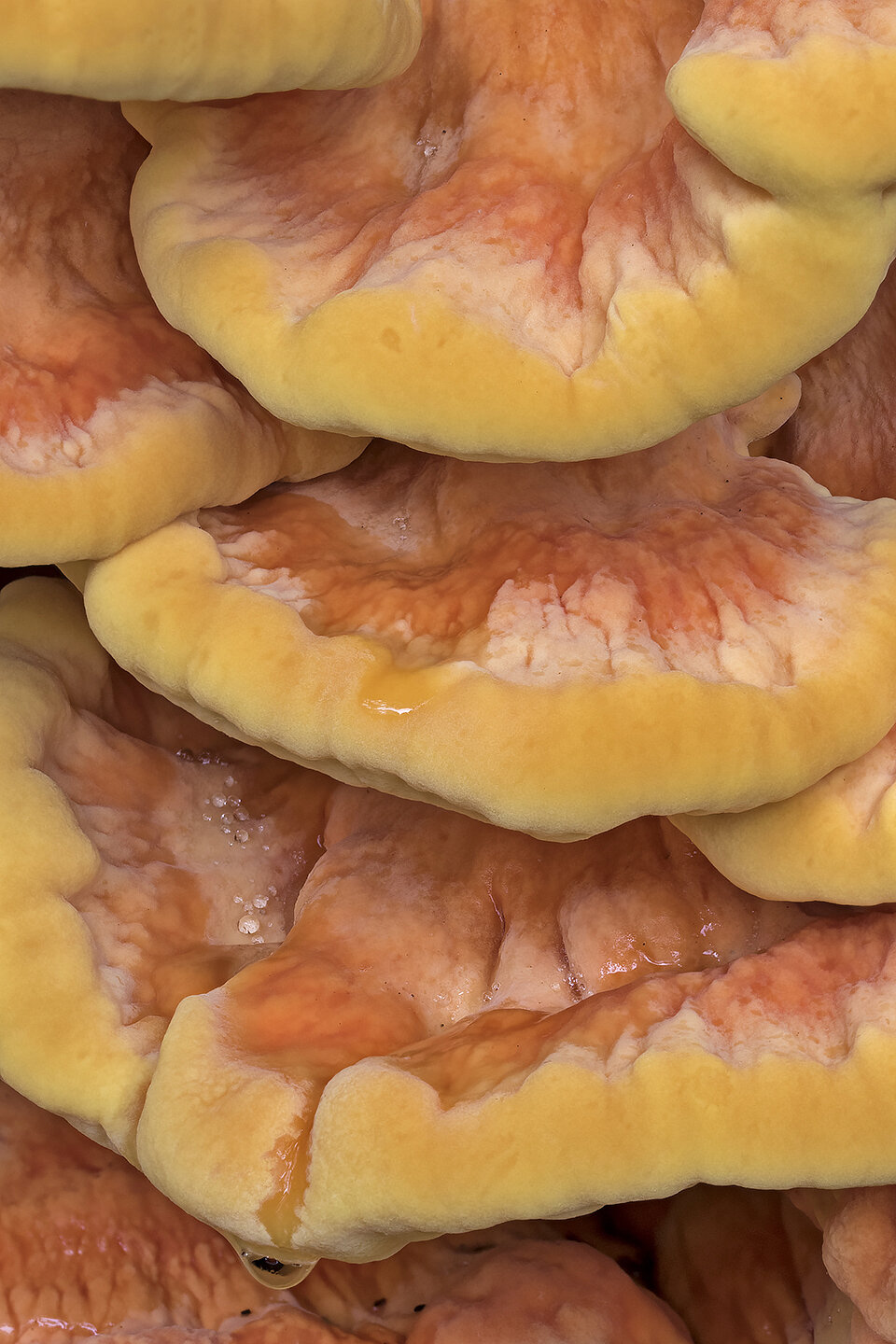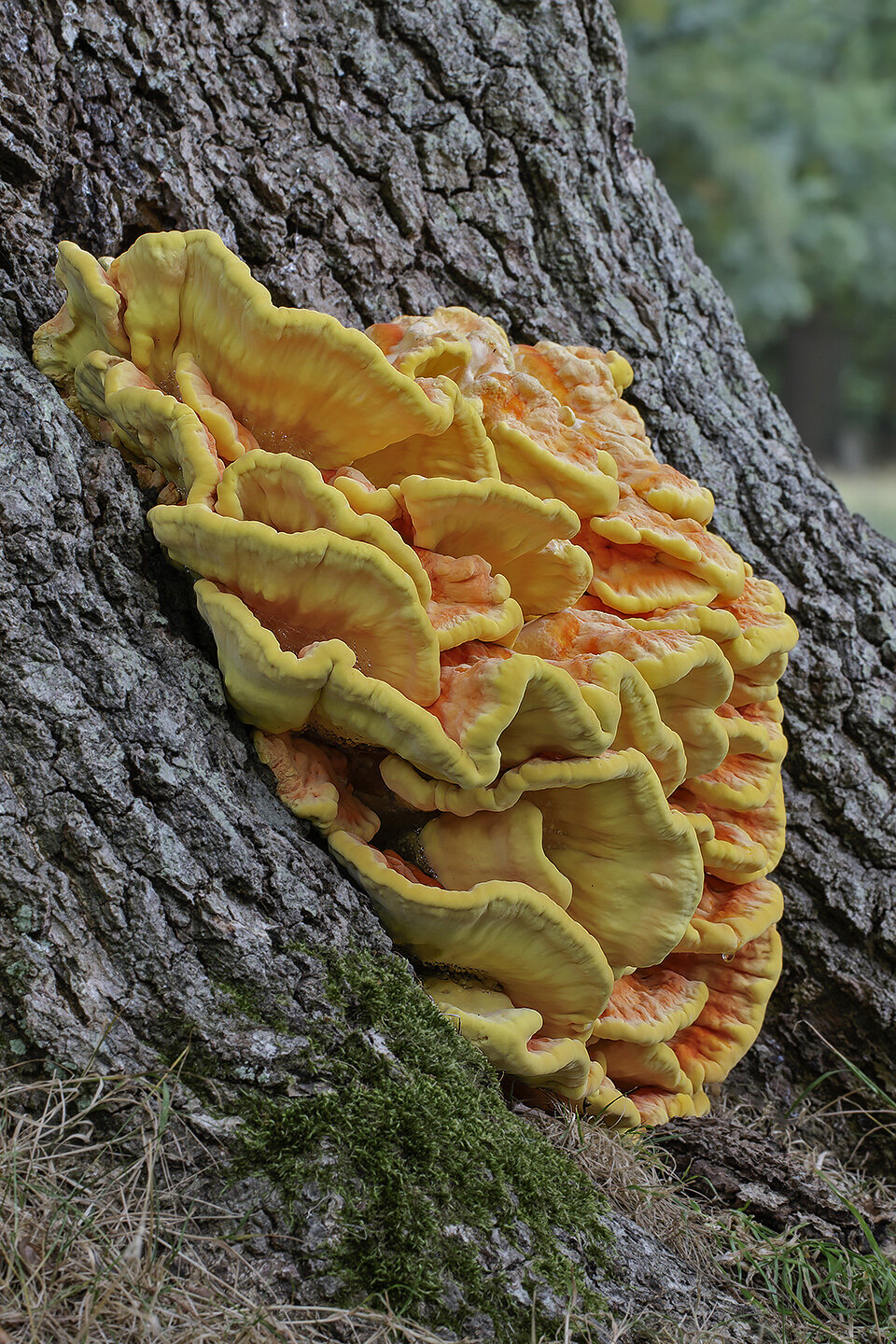Autumn equinox …
As the season changes from summer to autumn, the days shorten, the temperature drops and the sun rests low in the sky. It is a time of year that I particularly like as the trees start to whisper to one another in the breeze, and their leaves turn from green to many shades of gold. It is of course not only the trees that provide this multitude of colour.
Laetiporus sulphureus, with its beautiful orange or sulphur-yellow colouring, is difficult to miss. Commonly known as Chicken-of-the-Woods or the Sulphur Polypore, this common bracket fungus is most often seen on beech, oak, chestnut and less frequently on cherry and other hardwoods. Only rarely are these remarkable fungi associated with conifers.
The wavy-edged young brackets are soft and spongy with broad margins, but as they age the margins become thinner and paler. Their colours vary from egg yellow to pale creamy yellow with pink and orange tinged bands. The flesh is yellow-orange when moist, drying out paler.
The two images are of a beautiful specimen photographed at the base of an old oak in local Sussex parkland.
References:
Buczacki, S., Shields, C. and Ovenden, D. (2012). Collins Fungi Guide: The most complete field guide to the mushrooms and toadstools of Britain & Ireland. London: HarperCollins, p. 504, fig. p.505.
Kibby, G. (2017). Mushrooms and Toadstools of Great Britain & Europe, Volume 1, pp.66-67.
Phillips, R. (2006). Mushrooms. London: Pan Macmillan, p. 303, fig. f.
Sterry, P. and Hughes. B. (2009). Collins Complete Guide to British Mushrooms and Toadstools. London: HarperCollins, p. 252, fig. p. 253.
https://www.first-nature.com/fungi/laetiporus-sulphureus.php [Accessed, 20th September 2018].

